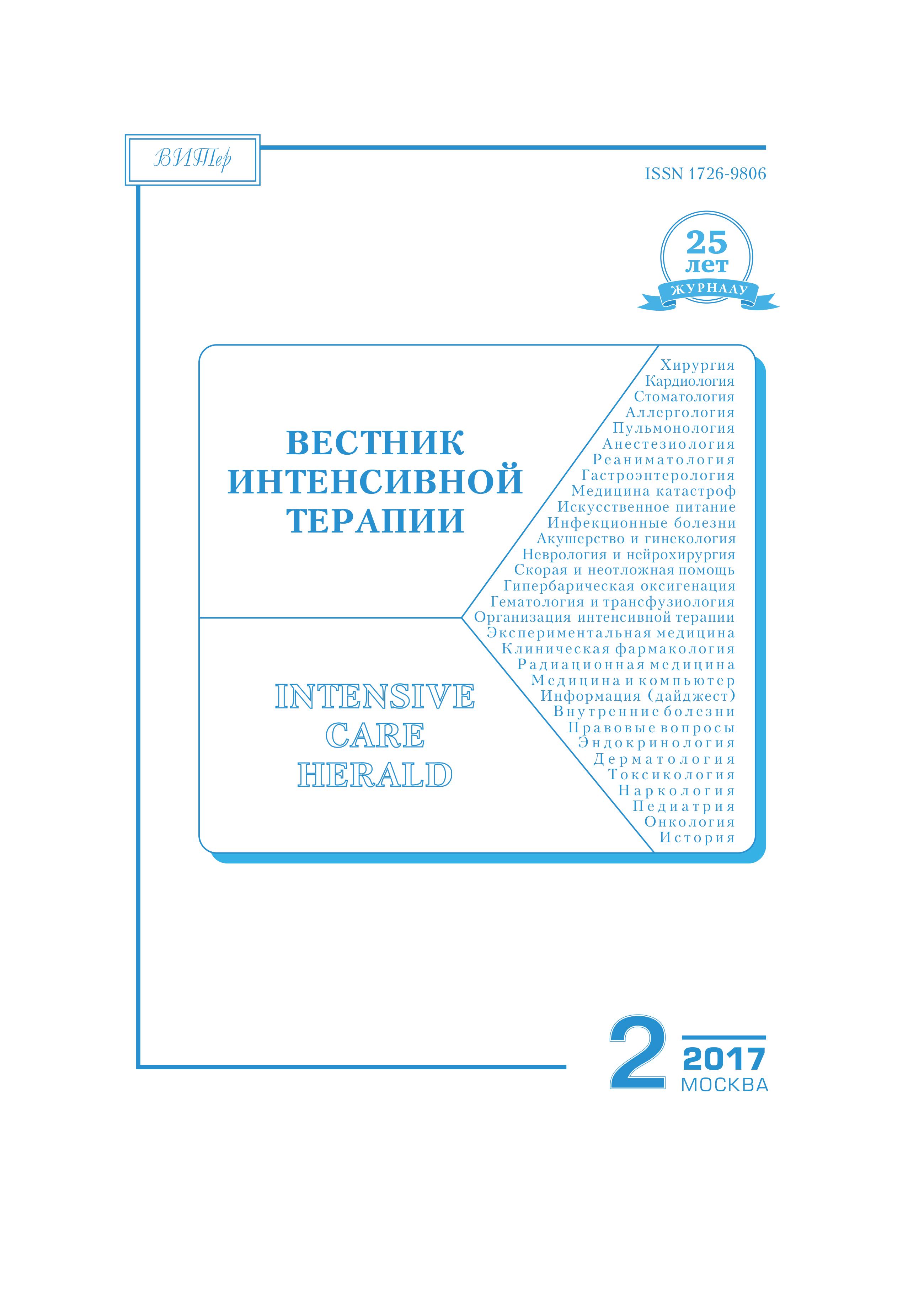Аннотация
В статье рассматриваются современные представления об этиологии, патогенезе, диагностике и лечении токсического эпидермального некролиза — потенциально опасной для жизни слизисто-кожной реакции. Приведено описание двух клинических случаев.Библиографические ссылки
- Григорьев Д.В. Многоформная экссудативная эритема, синдром Стивенса—Джонсона и синдром Лайелла — современная трактовка проблемы. РМЖ. 2013; 22: 1073–1083. [Grigor’ev D.V. Mnogoformnaya ekssudativnaya eritema, sindrom Stivensa—Dzhonsona i sindrom Laiella — sovremennaya traktovka problemy. RMJ. 2013; 22: 1073–1083. (In Russ)]
- Katsambas D., Lotti T.M. European Handbook of Dermatological Treatments. Moscow: MEDpress-inform, 2008.
- Lissia M. Toxic epidermal necrolysis (Lyell’s disease). Burns. 2010; 36: doi: 10.1016/j.burns.2009.06.213.
- Endorf W., Cancio L.C., Gibran N.S. Toxic epidermal necrolysis clinical guidelines. J. Burn Care Res. 2008; 29: 706.
- Johnson R., Jackson R., Bennion S.D. The effect of toxic epidermal necrolysis and erythema multiforme major patients sera on human keratinocyte viability in culture. Clin. Res. 1994;
- Самцов А.В., Белоусова И.Э. Буллезные дерматозы: монография. СПб.: Коста, 2012. [Samtsov A.V., Belousova I.E. Bulleznye dermatozy: monographiya. -Petersburg: Kosta, 2012. (In Russ)]
- Valeyrie-Allanore L. Fitzpatrick’s Dermatology in General Medicine. 8th Ch. 40. Epidermal Necrolysis (Stevens–Johnson Syndrome and Toxic Epidermal Necrolysis). 2012.
- Roujeau J.C., Guillaume J.C., Fabre P. et al. Toxic epidermal necrolysis (Lyell syndrome). Incidence and drug etiology in France (1981–1985). Arch. Dermatol. 1990; 126: 37.
- Roujeau J.C., Kelly P., Naldi L. et al. Medication use and the risk of Stevens—Johnson syndrome or toxic epidermal necrolysis. N. Engl. J. Med. 1995; 333: 1600–1607.
- Mockenhaupt M., Viboud C., Dunant A. et al. Stevens—Johnson syndrome and toxic epidermal necrolysis: Assessment of medication risks with emphasis on recently marketed The Euro SCAR-study. J. Invest. Dermatol. 2008; 128: 35–44.
- Auquier-Dunant A., Mockenhaupt M., Naldi L. et al. Correlation between clinical patterns and causes of erythema multiforme major, Stevens Johnson and toxic epidermal necrolysis. Arch. Dermatol. 2002; 138: 1019–1024.
- Rzany B., Correia O., Kelly P. et al. Risk of Stevens-Johnson syndrome and toxic epidermal necrolysis during first weeks of antiepileptic therapy: A case control study. Lancet. 1999; 353: 2190–2194.
- Halevy S., Ghislain D., Mockenhaupt M. et al. Allopurinol is the most common cause of Stevens—Johnson syndrome and toxic epidermal necrolysis in Europe and Israel. J. Am. Acad. Dermatol. 2008; 58: 25–32.
- Fagot J.P., Mockenhaupt M., Bouwes-Bavinck J.N. et al. Nevirapine and the risk of Stevens—Johnson syndrome or toxic epidermal AIDS. 2001; 15: 1843–1848.
- Mockenhaupt M., Messenheimer J., Tennis , Schlingmann J. Risk of Stevens—Johnson and toxic epidermal necrolysis in new users of antiepileptics. Neurology. 2005; 64: 1134–1138.
- Sassolas B., Haddad C., Mockenhaupt M. et al. ALDEN, an algorithm for assessment of drug causality in Stevens—Johnson syndrome and toxic epidermal necrolysis: Comparison with case-control analysis. Clin. Pharmacol. Ther. 2010; 88(1): 60–68.
- Paul C., Wolkenstein , Adle H. et al. Apoptosis as a mechanism of keratinocyte death in toxic epidermal necrolysis. Br. J. Dermatol. 1996; 134: 710–714.
- Abe , Yoshioka N., Murata J., Fujita Y., Shimizu H. Granulysin as a marker for early diagnosis of the Stevens—Johnson syndrome. Ann. Intern. Med. 2009; 151: 514–515.
- Shay , Kheirkhah A., Liang L. et al. Amniotic membrane transplantation as a new therapy for the acute ocular manifestations of Stevens—Johnson syndrome and toxic epidermal necrolysis. Surv. Ophthalmol. 2009; 54: 686–696.
- Lebargy , Wolkenstein P., Gisselbrecht M. et al. Pulmonary complications in toxic epidermal necrolysis: Prospective clinical study. Intensive Care Med. 1997; 23: 1237–1244.
- Bastuji-Garin S., Fouchard N., Bertocchi M. et al. SCORTEN: A severity-of illness score for toxic epidermal necrolysis. J. Invest. Dermatol. 2000; 115: 149–153.
- Correia O., Delgado L., Ramos P., Resende C., Torrinha J.A. Cutaneous T-cell recruitment in toxic epidermal necrolysis: Further evidence of CD8+ lymphocyte involvement. Arch. Dermatol. 1993; 129: 466–468.
- Шлык И.В., Крылов К.М. Лечение поражений дыхательных путей у пострадавших с комбинированной термической травмой: Учеб. пособие. СПб.: Изд-во НИИ СП им. И.И. Джанелидзе, [Shlyk I.V., Krylov K.M. Lechenie porazhenii dyhatel’nyh putei u postradavshih s kombinirovannoi termicheskoi travmoi. Tutorial. St.-Petersburg: Isd-vo NII SP, 2003. (In Russ)]
- Kardaun H., Jonkman M.F. Dexamethasone pulse therapy for Stevens—Johnson syndrome/toxic epidermal necrolysis. Acta Derm.Venereol. 2007; 87: 144. doi: 10.2340/00015555-0214.
- Bamichas G., Natse , Christidou F. et al. Plasma exchange in patients with toxic epidermal necrolysis. Ther. Apher. 2002; 6: 225–228.
- Wolkenstein , Latarjet J., Roujeau J.C. et al. Randomised comparison of thalidomide versus placebo in toxic epidermal necrolysis. Lancet. 1998; 352: 1586–1589.

Это произведение доступно по лицензии Creative Commons «Attribution-NonCommercial-ShareAlike» («Атрибуция — Некоммерческое использование — На тех же условиях») 4.0 Всемирная.
Copyright (c) 2017 ВЕСТНИК ИНТЕНСИВНОЙ ТЕРАПИИ имени А.И. САЛТАНОВА

